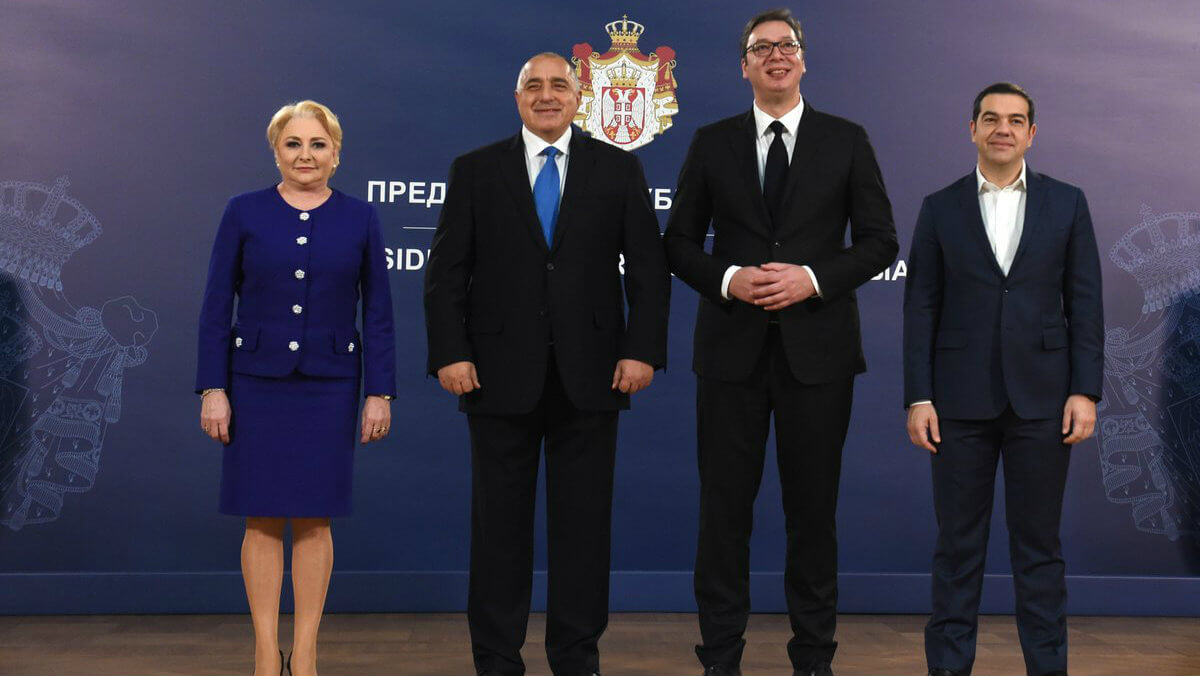Frequent looking towards the Far East can weaken our eyesight and therefore we do not see clearly where we need to go. Staring at distant Russia and even further China blurs our concentration and ability to stay on the path we have clearly decided on and on which we have already moved far. It can be very useful for Serbia, moving towards the West, to keep its eye on the east, not so far where Russia and China are, but much closer, where it will not spoil the eyesight. These are its first eastern neighbors – Romania and Bulgaria, as well as its southern partner and friend – Greece.
The cooperation within these four is becoming more and more intense, more interesting and, without any doubt, more useful for everyone. The leaders of Serbia, Greece, Romania and Bulgaria discussed the normalization of the border crossing regime after the pandemic on Tuesday, and it seems that they easily agreed to start with that as early as June 1. Vučić, Mitsotakis, Borisov and Ludovic Orban made a quick, efficient working meeting via video link and agreed on what interests all citizens of their countries – to open the borders as soon as possible and return to normal life in a larger, more developed and richer part of the Balkans.
Turning more decisively to the Middle East in the Balkans can be a very good strategic choice for Serbia. It is an alliance with countries with which there are incomparably more points of cooperation than points of conflict. There are almost none of the points of conflict. This Balkan quadrangle has been a zone without mutual conflicts for almost a hundred years. Our common heritage is neighborly and friendly. For the Balkans, which is immediately perceived in the world as a place of infernal extermination, this is more than an important fact.
No less important are the figures, which say that this zone, if it were one economy, would be the sixth strongest in the European Union, with a GDP (about 530 billion euro) higher than, for example, Poland, or Sweden, Belgium, Denmark, Austria… In terms of population (45 million), our Balkan four are the fifth largest in the EU, just behind Germany, France, Italy and Spain. Its geopolitical and geo-economic position is such that it makes it unavoidable in any long-term projections, especially due to its border European position towards Russia and, on the other hand, towards Turkey and the Middle East.
This is a very good company for Serbia, because it has sincere and loud supporters of its accession to the European Union as soon as possible, it has friends who want its success in resolving the issue of Kosovo, as the biggest political problem. Serbia has in them stable and economically strong partners, with whom it works on projects that raise the long-term performance of the entire region and each of the members individually, primarily in the field of energy and transport infrastructure. This company is already in NATO, which guarantees Serbia a strong and stable security background from many modern challenges, such as terrorism, illegal migration and organized crime.
In the long run, belonging to this team and strengthening ties within it, would position Serbia in a much better place in some future reconstruction of the European Union. Assuming that the Union will in the near future (with Serbia as its member) be divided into two or more zones, rings, leagues… as you wish, Serbia’s natural place will be alongside Romania, Bulgaria and Greece. Both in terms of geographical position, and in terms of infrastructural connections, in terms of economic strength, but also in terms of cultural heritage.
If the EU is transformed, and it is certain that it will, there is already no doubt for Serbia which part of such a new Union it will belong to. It will not be a zone in which Denmark or the Netherlands are, but a zone in which our Eastern and Southern European friends are. That is why today’s meetings with the leaders of Greece, Romania and Bulgaria, and seemingly “small” decisions on joint opening of borders, should be understood as putting stones in the mosaic of a new Balkan, but above all European alliance, in which Serbia will achieve faster and more efficiently its fundamental interests. Due to historical circumstances, but also due to the inertia of the “big” world, Serbia was seen as a part of the so-called Western Balkans. And that is completely natural, but it doesn’t have to be crucial. Wise nations, and above all their wise leaders, are able to change the circumstances in which they find themselves. Yes, the Western Balkans is the area to which Serbia belongs culturally and historically. It is also true that this is the area where Serbia trades, invests and exchanges the most. But it is also true that this is the area heavily burdened by conflicts, historical debates, a bad atmosphere and constant quarrels, which have hindered its civilizational progress for decades. It seems, sometimes, that the condition of the “Balkan tavern”, by which we are, unfortunately, recognized around the world, is permanent, and not temporary and solvable. Therefore, when looking at the future, the perspective for Serbia seems far better looking to its Middle East than to the Middle West.
